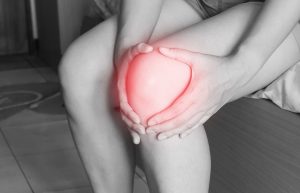One of the common complaints I get from my clients in clinic is in relation to knee pain. The knee pain can be anywhere – on the side of the knee, the back or front of the knee or below the knee. It can also range from just annoying to debilitating.
There are a number of non-muscular causes for knee pain including bursitis, arthritis, a cyst in the knee (known as Baker’s cyst) or Osgood-Schlatter’s disease. However, I’m not a doctor or a physiotherapist so this article is really going to focus on the muscular (and structural) causes of knee pain.
Muscles directly connected to the knee cap

The muscles that attach to the knee cap are the quadriceps (i.e. the quads) – the main muscles at the front of your thigh.
From a connective tissue perspective, the iliotibial band (i.e. the ITB, which is situated on the outside of your thigh) also attaches to the knee cap but it’s not a muscle, it’s band of fascia and, contrary to popular belief, you can’t actually stretch it, or roll it out (yep it’s painful to roll on it but in this case, pain doesn’t make it better). The muscle that is connected to the ITB however is the tensor fascia latae (i.e. the TFL), so releasing this muscle loosens the tension on the knee cap.
Other muscular/structural causes of knee pain
It’s important to also look at what else might be going on in the body to see whether it will have an effect on the knee. Here’s what we consider to be important:
- Hip alignment – the hips are the main component of the body that handles most of your body weight and distributes it evenly down the legs. If the hips are out of alignment then this can cause some serious issues downstream. Some of the muscles involved with misaligned hips are the psoas and iliacus.
- Knee alignment – ever notice some people’s knees look to point inward or outside as opposed to straight ahead? A misaligned knee will add extra strain to certain muscles and therefore impact on the area.
- Your ankles and feet – take a look at your shoes. Is one edge worn out a lot more than the other edge? If you have a tendency to walk placing more pressure on the inside or the outside of the foot instead of being nicely balanced on all four corners of your feet than your placing strain around the lower leg.
Easing the pain

In the case of tight muscles, it’s pretty easy to attack the muscle with a foam roller (recommended for quads). The TFL is a bit trickier so we’d recommend using a trigger point ball, a golf ball or some small and hard ball there instead.
In the case of the psoas, iliacus or other structural misalignment, remedial massage and chiropractic treatment can assist.

